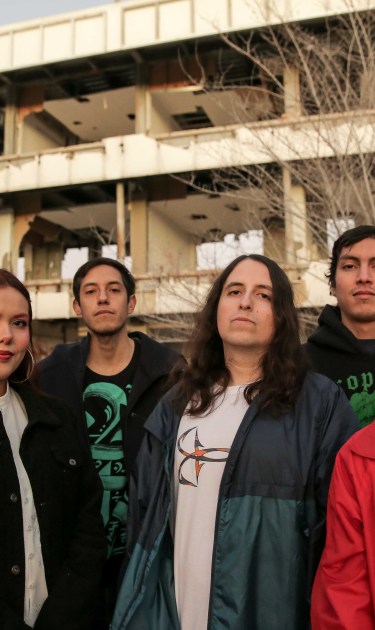Back in 2008, in that expansive strip of land known as the U.S.-Mexico border, the drug wars were about to exact unprecedented carnage. It was a heavy year all around – the financial crisis was escalating, and the fleeting optimism that marked the beginning of the Obama era couldn’t predict the shit that was about to hit the fan in the coming years.
But it wasn’t just bloody cartel disputes. Another mainstay of border life was as vibrant as ever during that time: electronic music. Big house and techno DJs would hop south of the border to play in cities like Tijuana and Juárez, giving the younger generation a taste for club music. This, in part, spurred a charmingly bizarre underground scene that rode the coattails of the then-ubiquitous new rave sound – and took it in weirder directions.
Tony Gallardo, better known as María y José, was one of the first people to hype the music of Kevin and Alex Santana. In those days, the Tijuana artist went by Unsexy Nerd Ponies, a ludicrous stage name matched by equally ludicrous stage performances. In his insatiable thirst for fresh sounds, he’d somehow scoured the most remote corners of the internet and come upon a pair of neon-clad electro-punk rave siblings from that other border metropolis, Ciudad Juárez. He flew them to Tijuana to play their debut show at a house party he co-organized. They were billed as Prepare to Meet Thy Broom, and would later go on to become Mock The Zuma and Wyno, eventually forming the nebulous musical collective known as Lowers.
“I’m not really sure how we came upon Tony; the whole thing is really kind of mysterious,” says Kevin, laughing, admittedly only half-remembering the whole period.

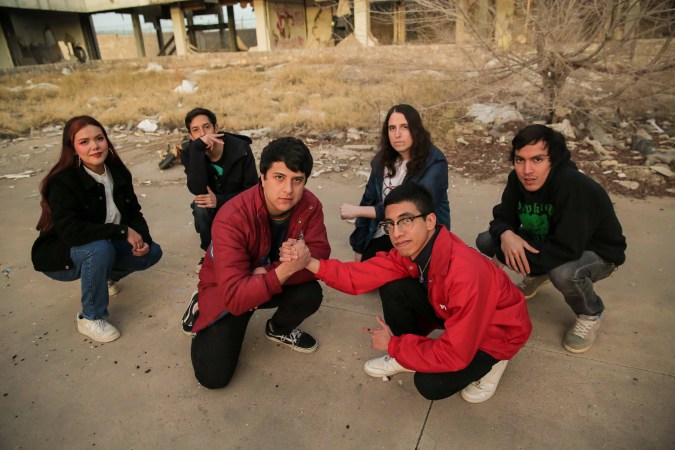
From its very beginnings, the Santana brothers were forging connections with the rest of Mexico, particularly in the north, that would later power their burgeoning scene back home. “MySpace brought us all together,” says Tony, who mentions another key actor in Prepare to Meet Thy Broom’s Baja connection, Alex Tonella of the Mexicali noise group xr=7, of which none other than Juan Cirerol was a member. He invited the duo to join their crew Colectivo Vanilla. Not long after, a similar invitation would be extended by Efren Valenzuela (Error.error) of the now-defunct yet legendary netlabel Lalala4e, based in Sonora but operating mostly online.
“Without being literal, Lowers approached violence and the reality of many border kids.”
Following the spirit of that initial show – in which, Tony confesses, “the audience had no idea what was going on” – house and DIY parties would become a mainstay of the Santana brothers’ ethos and approach to music. Their prominent and bizarre visual style, depicted in their flyers and album art – which portrayed slimy and malformed figures animated in blindingly bright colors – ran parallel to their musical aesthetic, and would continue to unfold with time.
One particularly unforgettable party got stuck in everyone’s head. It was a few months after their debut Tijuana show, but this time on their home turf of Juárez, organized by the Santanas’ own crew. José Ángel Fraire, another childhood friend who would later go on to found Lowers with them, provided the space, which was owned by his father. It was a country club, as Kevin describes it, that they felt was the perfect spot for a clandestine rave. They set up a sound system, booked a bunch of their friends to play, and sent out the invite through MySpace.
“Back then, there wasn’t much going on, so whenever anything happened, everyone would come,” recalls Kevin. And come they did – in droves, catching the unwanted attention of the local authorities.
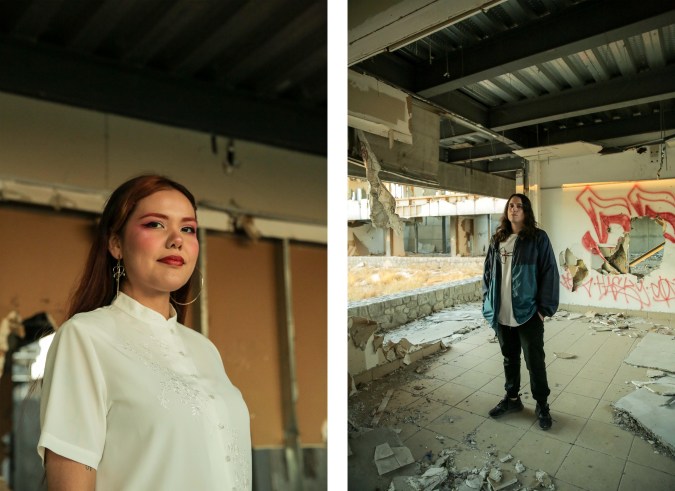
“Everything was cool, until about 1 a.m.,” says Alex. “That’s when a fleet of soldiers raided the party. They surrounded the place. Everyone started running away in different directions and since there were too many people, the soldiers couldn’t catch everyone.” He mentions some people were picked up by the authorities and “taken for a ride.” Others were put up against the wall and threatened. In the end, everyone was let go, but not without a good shock.
Although the incident happened a decade ago, it marked what would be a recurring theme in the social life of many young people on the border. After then-president Felipe Calderón declared a battle against the cartels in 2006, Juárez became ground zero for turf wars, and regularly occupied the top spot on lists of the most violent cities in the world. The bloodiest years happened to coincide with the Santana brothers’ coming of age.
Not long after that party, Prepare to Meet Thy Broom fizzled, like the nightlife community that gave birth to it. Everyone withdrew to their houses, their bedrooms and their own heads. Out of that period of introspection, new projects emerged. Alex started producing as Wyno; José started Nesstrak. Roberto Portillo would join their crew short after, under the name CROCAT. Meanwhile, Kevin started Mock The Zuma, championing a sort of deconstructed bass music that captured the ears of the promoters of MUTEK Mexico and another budding crew of producers in Mexico City: NAAFI.
“Their production was fiercely contemporary,” says Alberto Bustamante, who, along with Tomás Davó and Lauro Robles, founded NAAFI around the same period, and were the first ones in Mexico City to feature the Juárez artists in their showcase series ESTADO in 2012. “Without being literal, they approached violence and the reality of many border kids,” he adds.
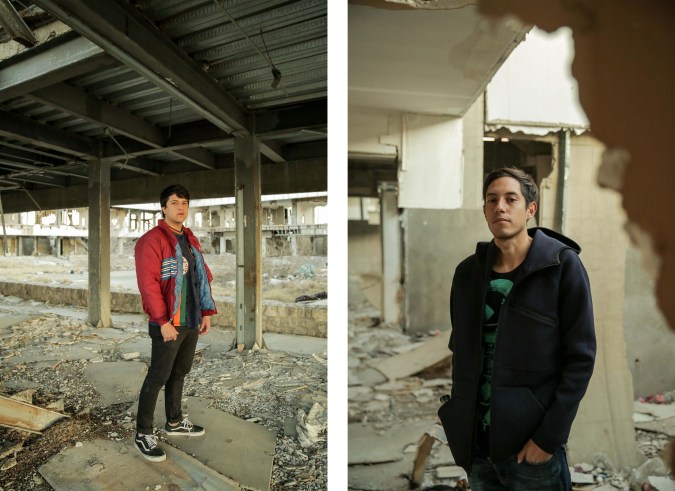
All of the projects shared a similar sense of introspection. It was downbeat and downtrodden, yet highly refined bass music. “This was club music made to be listened to in a bedroom, with a caguama [a bottle of 32 ounces of beer] in hand,” says Lauro Robles.
“Nobody wanted to go to clubs because of the massacres, so we would regularly get together in someone’s house to drink caguamas and make beats.”
Not long after their projects consolidated, Portillo banded the crew together and, along with Alex, started a digital-only label to showcase their works. “We were all making music, and nobody was inviting us to join their netlabels so we decided to start our own,” says Alex.
“The name came to me at a house party. I was really hungover and woke up on the floor of this house. My eyesight was really blurry, I was seeing double, and next to me there was a mug that said ‘Lovers,’ but I read it as ‘Lowers.’”
The name correlates to the overall feeling of delirium, which is reflected in their artwork courtesy of Portillo, who acts as the label’s visual director. Robles of NAAFI describes it as a kind of millennial psychedelia that’s at once oddly regional, referencing narco B-movies and the arid desert topography of the southwest. The ubiquitous caguama, which has become the unofficial icon of the label, ties in to this sense of self-imposed isolation.
“I think it represents a period in Juárez where things had gotten really fucked up,” says Alex. “Nobody wanted to throw parties anymore, or go to clubs because of the massacres, so we would regularly get together in someone’s house to drink caguamas and make beats or play video games in peace.”
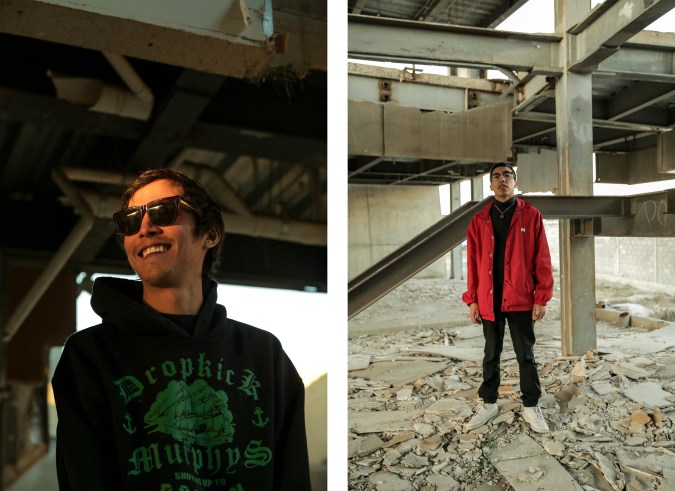
Despite their origins as rave kids, very little in Lowers’ seven-year, 17-release catalog resembles anything like dance or club-ready music. With every album or EP, the Juárez crew has pushed the limits of the listenable, inching ever closer to a sort of post-rhythmic abstraction, dwelling in a collage of sounds, odd synesthetic flashes, half-memories, paranoia, pathos, and a delirium coated in the lowest of frequencies.
“I got to see a lot of darkness growing up. The presence of death is always there, but that doesn’t mean living with fear. We still live with faith.”
Over the years, the label has opened its doors to collaborators outside of their initial sphere of founders. Rodolfo Ramos Castro, who is roughly the same age as Kevin and José, joined the crew as Pájaro Sin Alas, and Daniel Iván Martínez has been a regular collaborator as Loprofile. Like some of the other producers on the label, Kevin inspired Rodolfo to make music, who became an established musician from an early age.
The label has since incorporated artists from various corners of the region, from Austin to Monterrey to Tijuana, but the main nucleus of the group remains in Juárez. They are part of a unique generation of working-class border youth, born roughly around the mid-90s, the same years that NAFTA came into effect, which caused a boom in maquiladoras (cheap labor factories) throughout the region. It was also roughly the time the Juárez femicides began. This bizarre social reality has undoubtedly contributed to their lugubrious aesthetic.
“I got to see a lot of darkness growing up,” says Ramos. “The presence of death is always there, but that doesn’t mean living with fear. We still live with faith,” he says.
Though the group rarely coalesces outside of private house parties, partly because of safety concerns, when they do meet, it’s more often a result of Verónica Valdiviezo (Delirios) and Andrea Michelle Alvarado (aka Conejx), grade school friends of Santana and company, who run the sporadic, yet popular left-field electronic dance party Niyoka.
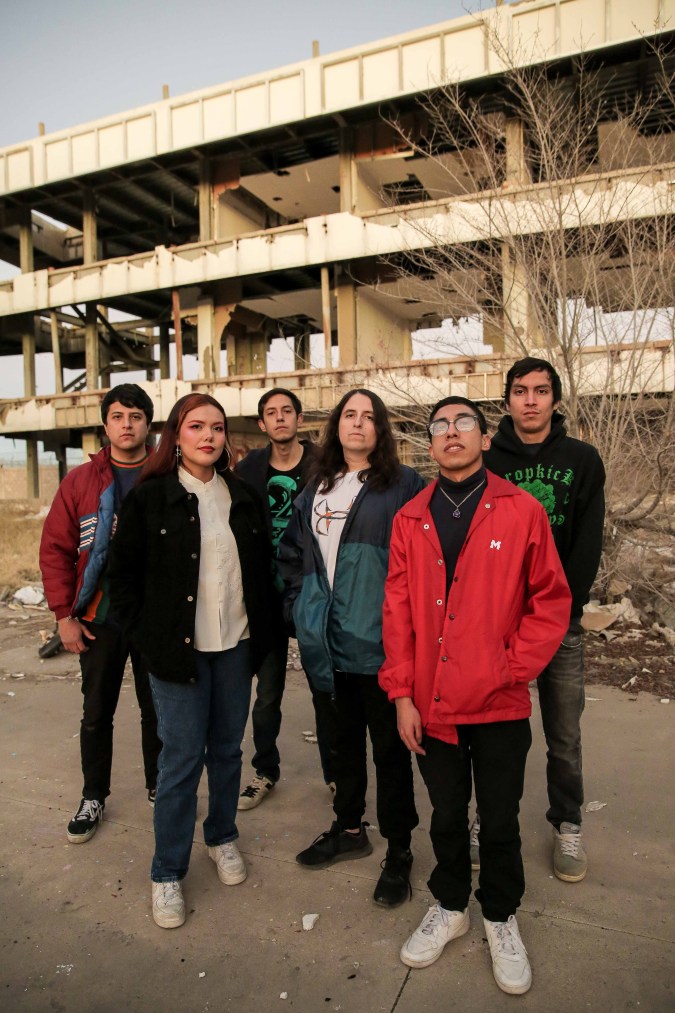
The pair began performing together as Pretty Tambache and eventually started the party in an effort to connect Juárez with the wider scene, booking artists from all around Mexico and the southwestern region of the U.S. Though not officially a part of Lowers, the roster has organically integrated into their project, becoming a regular mainstay of their lineups and also contributing to their visual aesthetic.
“They’re in no rush and they’re not susceptible to any trend.”
“We play stuff like juke, drum n’ bass, industrial, that new dembow that you hear these days… like techno dembow,” says Delirios. “I also love reggaeton but I don’t play that. Because everybody plays reggaeton.”
Indeed, the ubiquitousness of reggaeton and other new trends in dance music seems lost on Lowers and their border brethren. Oddly enough, this has made their music sound more relevant, even timeless. “Nothing has changed and that’s what’s cool about it,” says Kevin. “It’s very tumbadote, like that old school dubstep. It’s still evolving, with different artists; it’s getting trippier all the time.”
Perhaps the label’s greatest contribution to the scene has been the High and Low compilation series. The expertly curated trilogy has provided a unique outlet for the scene’s talented producers to showcase their most daring ideas. The releases deliver on the promise of the tongue-in-cheek title, featuring music that is at once colored in digital psychedelia and steeped in heavy bass sounds. It’s become the de facto source for the avant-garde electronic music happening mostly around the north of Mexico and the southwestern U.S., with artists represented from Monterrey, Tijuana, Los Angeles, El Paso, and of course, Ciudad Juárez.
“The last compilations to me have been perfect,” says longtime collaborator Marco Gutierrez, also known as Siete Catorce, who has collaborated with the label since its earliest days. “It’s like everyone else is looking for validation or to ‘make it’ in the scene, and they’re just happy sharing their trip.”
“They live on their own time,” says friend and trusted collaborator Carlos Huerta. “They’re in no rush and they’re not susceptible to any trend. Their productions show that.” The label’s scant releases remain some of the freshest and most experimental in the map of electronic music, according to Huerta.
By any measure, Lowers’ distance from any sort of cultural epicenter would normally be deemed a handicap for their efforts, especially considering the subsequent rise of other crews and producers that have moved to the capital or abroad. Yet this peripheral position has actually yielded Lowers the unique gift of crafting and curating a sound that is wholly their own.
Lowers’ High and Low Vol. 3 is out now. Stream it below.
